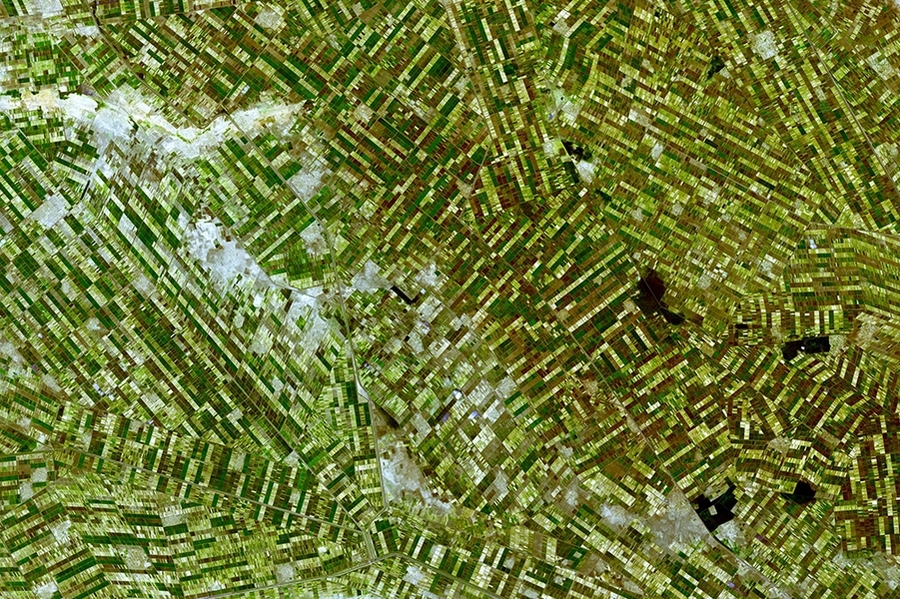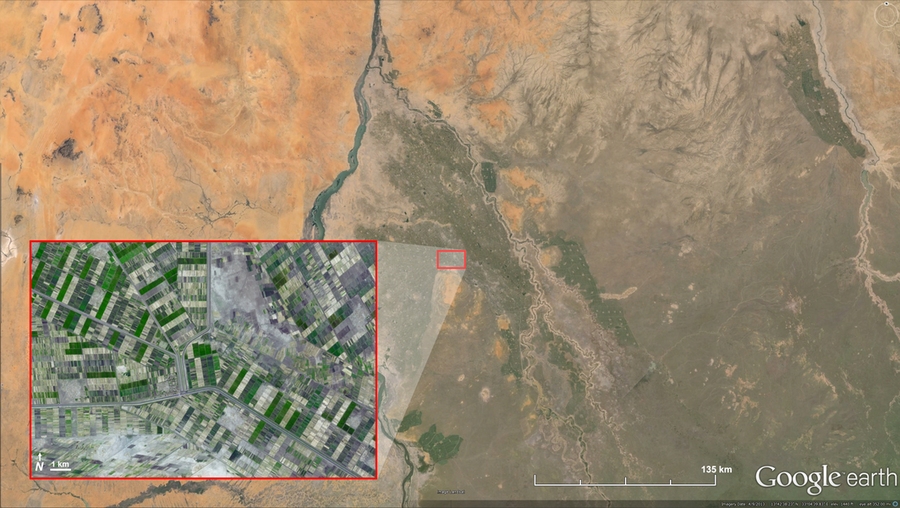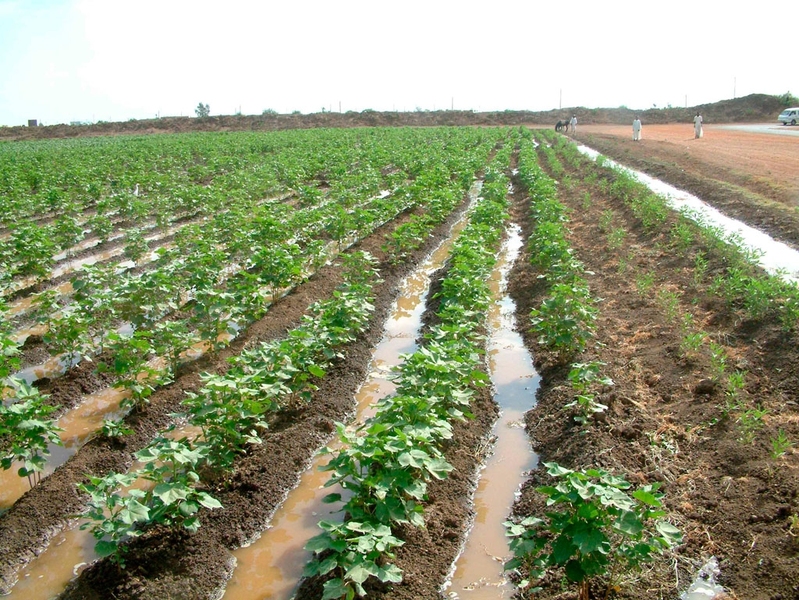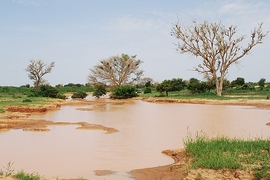With approximately 70 percent of all freshwater consumption worldwide used for agriculture, the reliance on large-scale irrigation development continues to spread and ultimately augments crop yields in many regions.
But the ongoing expansion of cropland irrigation, just as with any human-made land-cover change, holds potential for unintended consequences. The consequences of such human activity should be well understood before being implemented.
In a new paper, an MIT team in the department of Civil and Environmental Engineering (CEE) investigates the impacts of large-scale cropland irrigation on rainfall patterns in the East African Sahel around the Gezira Irrigation Scheme, now considered one of the largest irrigation projects in the world. The researchers piloted their exploration by combining theoretical modeling analyses with observational evidence gathered over several decades since 1930 — an unprecedented approach in previous studies.
The CEE team studied 60 years' worth of data of rainfall, temperature, and river flow to empirically deduce the atmospheric impacts of irrigation development.
“Large-scale development of irrigation systems is a good example of human activity that has changed land cover and the environment significantly in many regions of the world,” says co-author Professor Elfatih Eltahir, associate department head of CEE. “In all development projects, we need to better understand the potential impacts of our actions on the environment before we mindlessly develop.”
According to the theory developed by the researchers based on their investigation, when a large area is irrigated, surface air temperature is cooled and surface pressure increased. This reaction was conjectured to reduce rainfall over the irrigated land while generating a clockwise circulation that interacts with the prevailing regional wind. Depending on that interaction, the theory predicts that specific areas of convergence would be created, which would boost the rainfall in some of the surrounding areas.
After the researchers concluded their deep analysis of regional climate data, they concurred that large-scale irrigation development in the East African Sahel has consistently enhanced rainfall in areas to the east of the irrigated lands, while reducing rainfall directly over them.
Spatially and over time, the changes in rainfall and temperature matched up in a way that exceeded the group’s expectations and almost perfectly aligned with the original theory, says co-first author of the paper and CEE postdoc Ross Alter.
“You don’t often achieve that type of clear-cut match when attributing regional climate change from both theory and observations,” Alter says.
The team’s findings, says Eltahir, are indicative of the need for further consideration of potential agricultural, hydrological, and economic repercussions from irrigation expansion.
The paper was published today in the journal Nature Geoscience, by Alter, co-first author Eun-Soon Im of the Singapore-MIT Alliance for Research and Technology (SMART), and Eltahir.
Quantifying impacts
To define a climate, one must consider a breadth of at least 30 years' worth of data. Therefore, the team studied records gathered from 1930 to 1999, with a 10-year gap for irrigation system erection, in order to quantify the environmental impacts of irrigation.
The study’s first step was to employ a complementary analysis of numerical simulations and modeling. Using a sophisticated regional climate model — developed in the Eltahir group over the past 25 years, and which represents conditions in the atmosphere as well as over land — the authors conducted simulations using both irrigated and non-irrigated settings.
Their objective, in this regard, was to enumerate the effects of the irrigated land in the Gezira Scheme on the rainfall in a theoretical sense. The researchers then verified their conjectures by comparing with real occurrences observed throughout the 60-year span of time.
When the research team cross-compared their simulations to the collected empirical evidence, the mapped depictions of the changes in rainfall from pre- to post-irrigation expansion revealed strong decreases over the Gezira Scheme and distinct increases in eastern lands. The effects of enhanced rainfall are particularly apparent in Gedaref — a region east of Gezira. For the past half-century, concurrent with the irrigation expansion in the Gezira Scheme, Gedaref has received plenty of rainfall and has emerged as a successful rain-fed agricultural region.
This climate behavior is a stark contrast to the ongoing drought experienced by the majority of the African Sahel.
“To pinpoint the impacts of irrigation on climate, it is important to identify areas of relative change, not absolute change,” Alter explains. “Because rainfall in that region strongly decreased overall, any larger changes in rainfall — even zero change between the two periods in question — would still be seen as increases.” Stable rainfall, in this case, is still better in comparison to the lands experiencing droughts.
Optimizing efficiency
Though the researchers acknowledge irrigation as an ideal solution to agricultural challenges, all agree that comprehension of human-made land-cover change and its influence on the natural environment is necessary for sustainable development.
“The knowledge gained from this study provides a more fundamental understanding of the impacts of land use and land cover changes on the atmosphere,” Alter says.
The researchers specify that their study does not take into account other possible processes than irrigation development that disturb the climate such as changes in the chemical composition of the atmosphere and the resulting global climate change.
Now with an established spectrum of probable impacts from significant irrigation development, the researchers suggest that this new knowledge about the impacts of land cover change on the climate system should help in achieving more rigorous attribution of the regional and local impacts of global climate change.
“While there are many studies that show landscape has such effects, the use of real-world observed data makes this a particularly important research contribution,” says Roger Pielke Sr., a senior research scientist of the University of Colorado not involved in this study. “Irrigated landscapes worldwide, indeed all human modified landscapes, based on the Alter et al. study, should be expected to play a major role in local and regional weather and climate. This human effect on the climate system has been underestimated in past assessments of climate change. The Alter et al. paper is a very significant contribution in expanding our understanding of the human role on the climate system."
“There is undoubtedly a pressing need for large-scale irrigation in Africa and other regions,” Eltahir says. “We now have a foundation of the likely impacts of human-induced land-cover changes, and can use this new knowledge in the design stage of irrigation systems as opposed to after the fact.”
Funding for this research was provided by the Cooperative Agreement between the Masdar Institute and MIT, and by the Singapore-MIT Alliance for Research and Technology.











